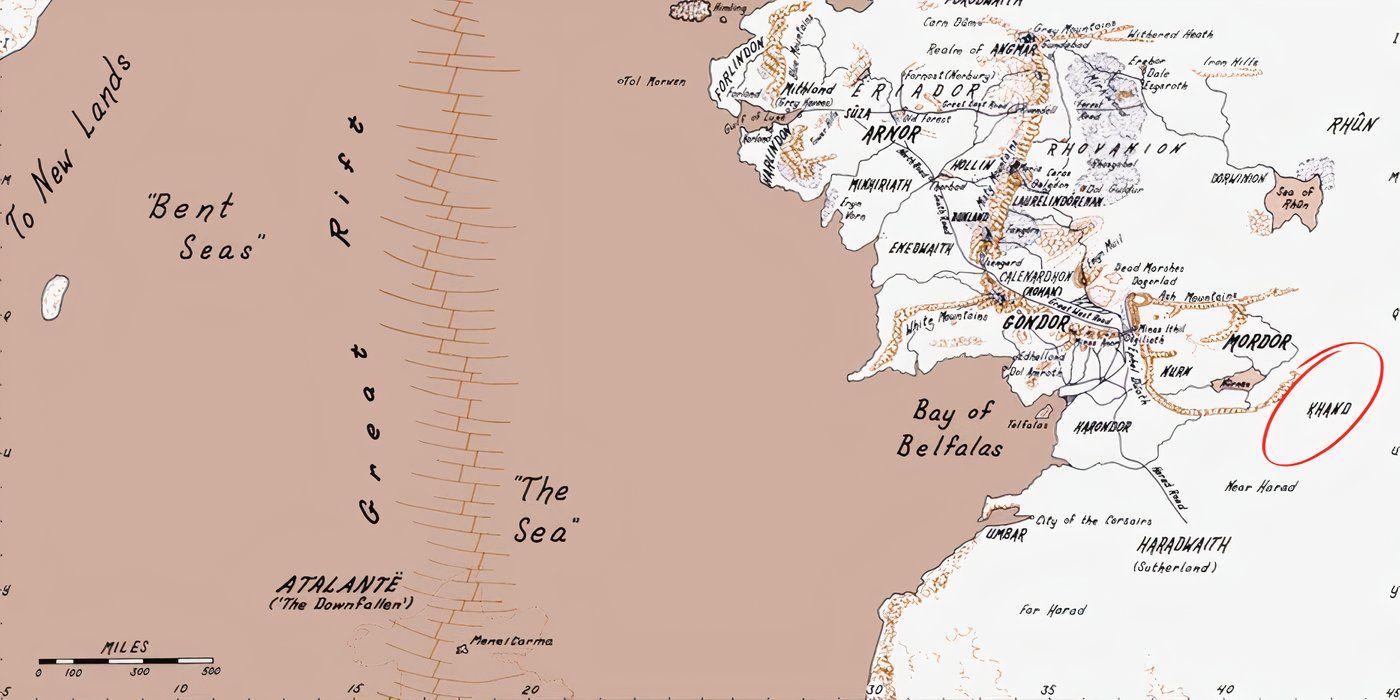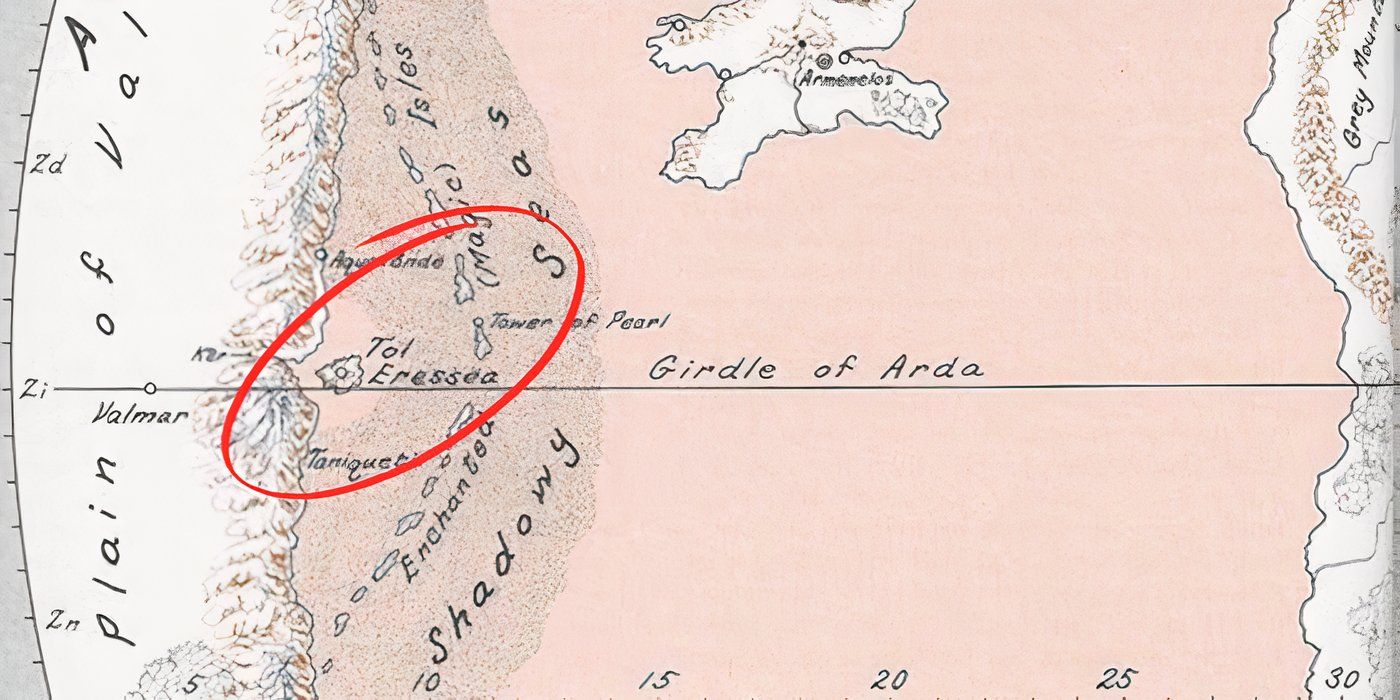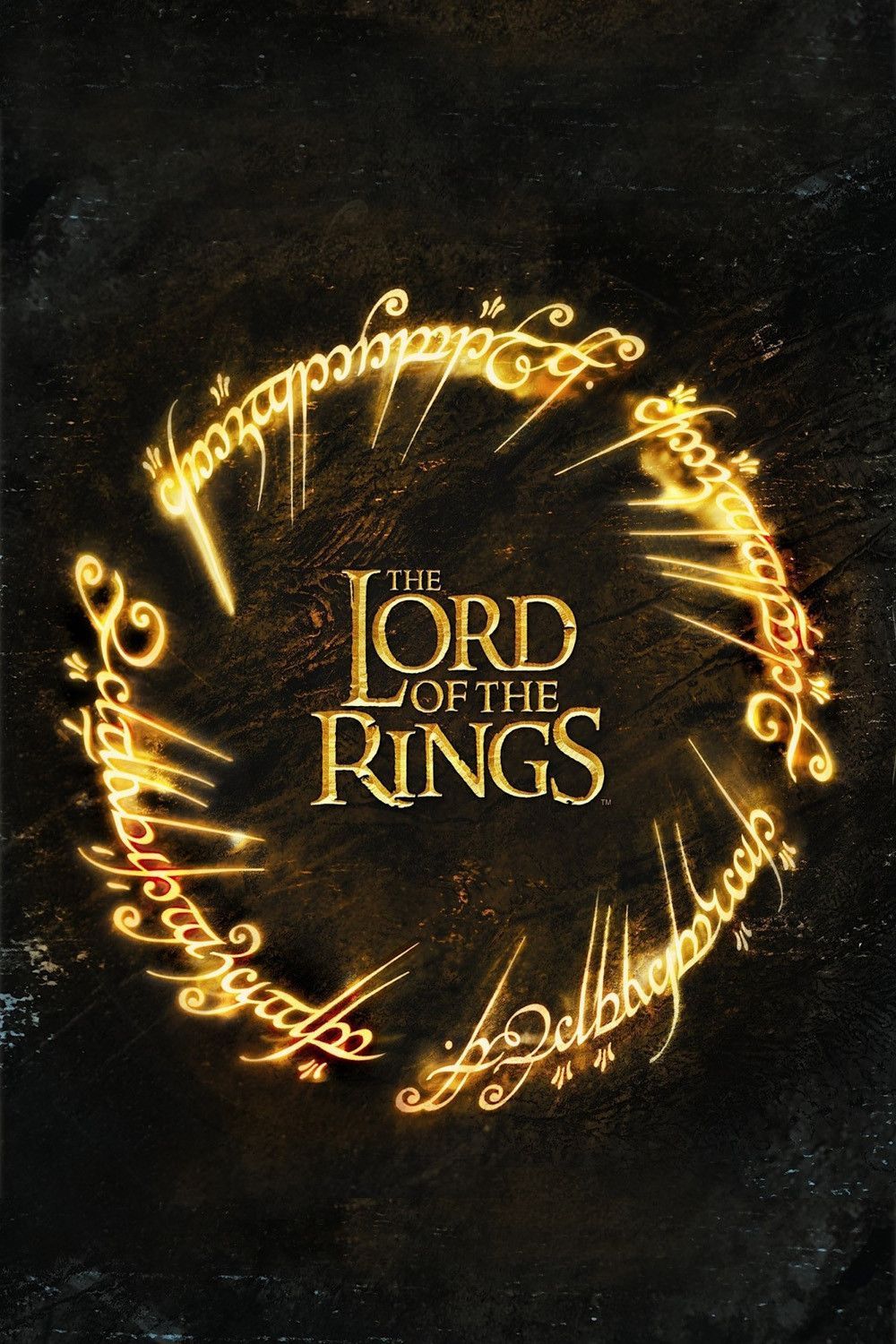The Lord of the Rings is known for Middle-earth, but Middle-earth is just one continent in Arda, which is the world within Eä – the universe created by J.R.R. Tolkien. Middle-earth’s God, Eru Ilúvatar, created spirit beings called Ainur first, and they lived with him in the Timeless Halls outside Eä. Eru proposed a musical theme and the Ainur sang the magical Ainulindalë, which Eru then revealed had visualized a plan for Eä. The 15 most powerful Ainur, the Valar, went down into Eä with Ainur of a lesser degree called Maiar, and together they built what they had visualized.
As Eru ordained, these Ainur couldn’t leave Eä until it was ended. Outside Eä lay the void. The Vala Melkor sought total control and gathered many Maiar to his service. The other Valar opposed Melkor and his forces from the Days before Days into the First Age. Coming to be known in the Elvish language Quenya as Morgoth, or “Black Foe,” Melkor was eventually defeated and cast into the void until the final battle, the Dagor Dagorath, a story Tolkien didn’t finalize. Meanwhile, realms rose and fell in Arda until The Lord of the Rings‘ Third Age, making the full map of Middle-earth intricate and complex.
The Shire
Eriador
The Shire may be Middle-earth’s most famous spot, inhabited by Lord of the Rings’ main character, Frodo Baggins. The Shire was the home of Frodo’s friends Samwise Gamgee, Merry Brandybuck, Pippin Took, and Bilbo Baggins, the main character of Peter Jackson’s The Hobbit movies. The Shire is practically synonymous with Howard Shore’s legendary “Concerning Hobbits,” which sounds just like coming home. Shore’s soundtrack to The Lord of the Rings movies made the Shire seem as beautiful and peaceful as Tolkien described it.
The Shire was a politically defined Hobbit territory in Eriador, a western Middle-earth region that spanned the area from the western Blue Mountains to the Misty Mountains eastward. Previously, it had contained Arnor, which became subdivided into Arthedain, Cardolan, and Rhudaur, which eventually fell. Hobbits migrated westward and reached the by-then unsettled Eriador, with Fallohides entering in the year 1150 of the Third Age. Hobbits agreed the bounds of the Shire with King Argeleb II of Gondor in T.A. 1601.
|
Tolkienian Age |
Event Marking The Start |
Years |
Total Length In Solar Years |
|---|---|---|---|
|
Before time |
Indeterminate |
Indeterminate |
Indeterminate |
|
Days before Days |
The Ainur entered Eä |
1 – 3,500 Valian Years |
33,537 |
|
Pre-First Age Years of the Trees (Y.T.) |
Yavanna created the Two Trees |
Y.T. 1 – 1050 |
10,061 |
|
First Age (F.A.) |
Elves awoke in Cuiviénen |
Y.T. 1050 – Y.T. 1500, F.A. 1 – 590 |
4,902 |
|
Second Age (S.A.) |
The War of Wrath ended |
S.A. 1 – 3441 |
3,441 |
|
Third Age (T.A.) |
The Last Alliance defeated Sauron |
T.A. 1 – 3021 |
3,021 |
The Shire was divided into the North, South, East, and West Farthings. The East and West Marches were outside the Farthings. Tookland was inhabited mostly by Tooks and was a large region in the Westfarthing. Buckland was east of the Brandywine River, otherwise known as the Baranduin. Most inhabitants of Buckland were the Brandybuck family. The Westmarch was to the west of the farthings. Bag End was in Hobbiton, which was in Westfarthing and reasonably central in the Shire.
Bree
Eriador
Just off the Great East Road, Bree was one of the Shire’s earliest settlements and was just east of Buckland. Bree was the chief village of Bree-land. Bree-landers claimed to have been the first smokers of pipe-weed, which the Shire was famous for. Hobbits lived together with Men of Bree, who had settled Bree in the Elder Days (before the Second Age).
Grey Havens
Eriador
The Grey Havens were in western Eriador. Also known as Mithlond, the havens were ruled by Círdan the Shipwright, Middle-earth’s oldest Elf in the Third Age. Ships set sail from the Grey Havens to and from the continent of Aman, which had been removed from the Circles of the World in the Second Age and was only accessible by the Straight Road. Aman’s most famous realm was Valinor, the land of the Valar.

Related
All 15 Types Of Men In Lord Of The Rings Explained
There were many different civilizations of Men in J.R.R. Tolkien’s The Lord of the Rings, with Peter Jackson’s movies just scratching the surface.
When the War of Wrath sank the realm of Beleriand, the Blue Mountains were split and water flowed into the gap, forming the Gulf of Lhûn. The Grey Havens were formed at the start of the Second Age around this gap. The remnant of Beleriand, Lindon, was above and below the Gulf of Lhûn, to the west of the Grey Havens.
Dunland
Eriador
Dunland constituted the southernmost part of Eriador and was inhabited by Dunlendings. The Dunlendings were employed by Saruman to help him fight Rohan, as seen in The Lord of the Rings: The Two Towers movie. Dunlendings had been in conflict with Rohan ever since Rohan’s people, the Rohirrim, were granted disputed land by Gondor’s king. The Rohirrim had come from Rhovanion to a land that the Dunlendings were protective of.
The Warner Bros. anime movie
The Lord of the Rings: the War of the Rohirrim
will cover the Rohirrim’s conflict with the Dunlendings, out on December 13, 2024.
The Dunlendings sprung from the Haladin, a reclusive house of the Edain – the first Men, and those who hadn’t sided with Morgoth in the battles of the Elder Days (per The Peoples of Middle-earth). They first settled Dunland in the Second Age, fleeing the ruthless colonization of Númenóreans returning from Númenor. The Dunlendings were long sundered in language and culture from the Edain-descended Númenóreans, which didn’t help relations. When Gondor formed, Dunland became its territory, but it eventually withdrew.
Rivendell
Misty Mountains
Rivendell was founded by Elrond in S.A. 1697 as he fled from Sauron’s forces during the War of Sauron and the Elves. Elrond and his people took sanctuary in this outpost in the Misty Mountains, having run from Eregion as it fell to Sauron. Rivendell became one of the greatest Elvish strongholds in Middle-earth, protected by Elrond and Vilya, his Ring of Power.
|
Second Age Event |
Second Age Year |
|---|---|
|
Sauron began construction on Barad-dûr |
1000 |
|
Sauron befriended the Elves of Eregion as Annatar |
1200 |
|
Rings of Power were forged |
1500 |
|
The Three great Elven Rings were forged |
1590 |
|
The One Ring was forged, Barad-dûr was completed, Sauron openly proclaimed himself |
1600 |
|
Sauron began to prepare to invade Eriador |
1605 |
|
The War of the Elves and Sauron began |
1693 |
|
Sauron invaded Eriador |
1695 |
|
Sauron sacked Eregion and killed Celebrimbor. Rivendell was founded. The Dwarves assailed Sauron. Khazad-dûm closed. |
1697 |
|
Sauron overran Eriador |
1699 |
|
Númenóreans defeated Sauron |
1700 |
|
Sauron was driven from Eriador and fled to Mordor. First White Council held |
1701 |
|
Ar-Pharazôn seized the scepter |
3255 |
|
Sauron became Pharazôn’s prisoner in Númenor |
3262 |
|
Númenor fell |
3319 |
Elrond’s daughter, Arwen, lived with him in Rivendell for much of her life. She also spent a lot of time with her grandparents, Galadriel and Celeborn, in Lothlórien. As distant relations of Elrond, the Chieftains of the Dúnedain were fostered in Rivendell since T.A. 2012, which was how Aragorn came to be raised there and met Arwen.
Moria
Misty Mountains
Moria was located in the middle of the Misty Mountains and was otherwise known as Khazad-dûm. Khazad-dûm was one of the greatest Dwarvish colonies in Middle-earth history since the Years of the Trees. Khazad-dûm was founded in the Elder Days by Durin the Deathless, who awoke under Mount Gundabad, the northernmost point of the Misty Mountains. The Dwarves were the creation of Aulë, the smith, one of the eight Aratar, the 15 Valar, and one of Tolkien’s greatest demigods.
Moria was reclaimed by Balin in T.A. 2989, taken by Orcs in T.A. 2994, and finally resettled by Durin VII in the Fourth Age.
Blessed with the Imperishable Flame by Eru, Dwarves were given life. Durin was the first Dwarf, the oldest of the Seven Fathers of the Dwarves. Durin ruled Khazad-dûm with his people until their mining unearthed a Balrog in T.A. 1981 and the colony was deserted. Moria was reclaimed by Balin in T.A. 2989, taken by Orcs in T.A. 2994, and finally resettled by Durin VII in the Fourth Age.
Fangorn Forest
Misty Mountains
Fangorn Forest was the realm of the Ents in The Lord of the Rings. Merry and Pippin famously adventured through it with Treebeard in The Two Towers book and movie. Fangorn Forest is at the southeastern end of the Misty Mountains and may be named after the Ent Fangorn. Fangorn Forest was the easternmost remnant of a huge forest that spanned Middle-earth in the Elder Days but was devastated by Númenórean expansion.
Isengard
Misty Mountains
Isengard is at the foot of the Misty Mountains, flanked by the Ring of Isengard. This circle of mountains protected Orthanc, Isengard’s great tower, originally built by early Gondorians as they were settling Middle-earth after the fall of Númenor. Led by Elendil and his sons, Isildur and Anárion, the fleeing Númenóreans built the Realms in Exile, founding settlements and structures that would remain great long into the Fourth Age and beyond.
The Lord of the Rings
is one novel, but it was first published in three parts, between 1954 and 1955, due to its length, and is still often published in three parts.
Orthanc’s keys were passed to Gondor, while the local Rohirrim and Dunlendings warred. Saruman offered to manage Isengard, which Gondor and Rohan, who were allies, welcomed. Gradually, Saruman fell under Sauron’s sway and populated Isengard with Orcs and Uruk-hai. However, the Ents reclaimed this territory during the War of the Ring.
Mirkwood
Rhovanion
Mirkwood was known as Greenwood the Great before the shadow fell over it. Occupying perhaps the better part of Rhovanion, Mirkwood is partially what gave the region its name, with Rhovanion being Sindarin (Elvish) for “Wilderland.” Greenwood the Great possibly connected to Eriador’s Old Forest in the Elder Days before the War of Wrath and migrating civilizations changed Middle-earth’s structure.
Karen Wynn Fonstad’s
The Atlas of Tolkien’s Middle-earth
is the most lore-accurate Tolkien cartography since Tolkien’s own maps.
Nandor Elves migrating from Cuiviénen settled Greenwood, which eventually fell into the hands of Sindar Thranduil, father of Legolas. In the Third Age, Sauron built Dol Guldur in southern Greenwood, and dangerous flora and fauna spread from it, turning Greenwood into Mirkwood. After Sauron fell, Galadriel and Celeborn conquered Dol Guldur and divided Mirkwood between themselves, Thranduil, the Beornings, and the Woodmen. They renamed it the Wood of Greenleaves.
Lothlórien
Rhovanion
Just east of the Misty Mountains, Lothlórien was first occupied by Nandor Elves but was established as the realm of Lord of the Rings fame by Amdir near the start of the Second Age. Amdir rejected the common Elvish choice of sailing back West to Valinor after the War of Wrath. With Beleriand sunk and only Lindon remaining, most Elves departed Middle-earth for Valinor, but those who stayed spread out. Sindar Elf Amdir and his son, Amroth, took over the rule of Lothlórien. Noldor noble Galadriel and her husband, Celeborn, moved there and assumed leadership in the Third Age.
Erebor
Rhovanion
Located in northeast Rhovanion, or Wilderland, Erebor was also known as the Lonely Mountain, and it was the destination of Thorin’s Company in The Hobbit book and movies. Bilbo and the Dwarves’ quest ended at Erebor, which was presided over by the dragon Smaug. But Erebor had belonged to the Dwarves before Smaug took it over. This old Dwarvish stronghold was founded by Thráin I after he led his people away from Khazad-dûm following the Balrog’s emergence. Dwarves recolonized Erebor after Smaug was slain.
Dale
Rhovanion
Men built the town of Dale under Erebor when it first prospered before Smaug invaded. Known for its toy market and bells, this great city of the Northmen was threatened by Smaug when he arrived, and it became deserted and was left in ruins. Esgaroth, or Lake-town, sprang up nearby. Bard of Esgaroth, descended from the Lord of Dale, shot down Smaug in T.A. 2941 and rebuilt Dale three years later, as Thorin retook Erebor. The Kingdom of Dale ended up stretching far and encompassing Lake-town, which was rebuilt after the ruinous battle.
Rhûn
Eastern Middle-Earth
East of Rhovanion and northeast of Mordor, Rhûn was a mysterious land in Middle-earth. In the Elder Days, both Elves and Men awoke in the Far East, respectively Cuiviénen and Hildórien. Long since changed from its very core, Middle-earth situated Rhûn between Rhovanion and the old lands that most likely once hosted Cuiviénen and Hildórien. While many Elves and Men migrated west, many remained. Elves that never migrated were known as the Avari. Much of Rhûn fell to Morgoth and later, Sauron, although it wasn’t known exactly how or via which leaders.
J.R.R. Tolkien entrusted
The Silmarillion
to his son, Christopher, to finish editing and to publish after he died. Christopher faced impossible editorial decisions, so he published the 12-volume
The History of Middle-earth
book series to share the rest of the legendarium and explain his
Silmarillion
decisions.
The people of Rhûn were known as the Easterlings, and they often warred with Gondor in the Third Age. The Blue Wizards went to Rhûn around T.A. 1000, according to Unfinished Tales, although Tolkien toyed with having them do this in the Second Age. As two of the Valar’s Istari, their mission was to oppose Sauron, but it was unknown how that went. Fleeing Dol Guldur in the Third Age, Sauron lived in Rhûn for 400 years and gained many Easterling followers, as denoted in The Peoples of Middle-earth, the final History of Middle-earth book.
Gondor
Southern Middle-Earth
Gondor and Arnor were the Realms in Exile, established by Elendil’s family after the fall of Númenor in S.A. 3320. While Arnor eventually fell, Gondor survived to become what may have been the greatest realm of Middle-earth’s Third and Fourth Ages. Managed by the Ruling Stewards of Gondor since King Eärnur went missing in T.A. 2050, Gondor’s rightful king, Aragorn, finally assumed the throne in T.A. 3019. King Aragorn Elessar’s claim to the throne was undeniable as he was the Heir of Isildur, descended from Anárion, and a great military leader.
Gondor was a broad and strategically coastal realm that neighbored Mordor to its east, Rohan to its north, and Harad to its south. War blighted the realm, so its boundaries were hotly contested over the years. Gondor had a riverside settlement called Pelargir and occasionally occupied the southern port of Umbar. Although Minas Ithil was taken by Sauron and turned into Minas Morgul, Gondor’s capital, Osgiliath, remained wartorn, as did Ithilien. After the War of the Ring, Aragorn reclaimed Gondor’s territory.
Rohan
Southern Middle-Earth
The Rohirrim were descended from the Northmen, who were descended from the Edain. This race had never crossed the Blue Mountains and been taken to Númenor, unlike some of the Edain. The Northmen were friendly with the Númenóreans who returned after their island sank and developed Gondor and Arnor. Gondor eventually formalized some of its territory into Rohan, gifting the Rohirrim the territory of Calenardhon in T.A. 2510.
Welsh inspired much Elvish. The Sindar-named Calenardhon (pronounced Calenarthon) reflects the Welsh town Caernarfon.
By the time of the events of The Lord of the Rings, Théoden ruled Rohan from its capital, Edoras. Théoden raised his orphaned niece and nephew, Éowyn and Éomer, as his own. Located between Fangorn Forest, the White Mountains, the River Isen, and the River Entwash, Rohan included the Eastfold, the Westfold, and the fortress of Helm’s Deep.
Mordor
Southern Middle-Earth
In Middle-earth’s southeast, Mordor was known as the Black Land and its mention sent shivers down many a spine in The Lord of the Rings. Marked by Orodruin, or Mount Doom, Mordor was the territory of Dark Lord Sauron. Sauron forged the One Ring at the Cracks of Doom in Orodruin, making that the one place it could be destroyed. Frodo finally managed to do so, with Gollum biting the ring off his finger and falling into the volcano.

Related
What Sauron Really Is In The Lord Of The Rings: True Nature & History Explained
The eponymous Lord of the Rings is an enigma in the novel and the movies but answers are available in Tolkien lore as to his true nature.
Sauron chose Mordor as a base around 1000 years into the Second Age of Middle-earth. He built his Dark Tower, Barad-dûr, and the area was used to assemble troops for his repeated bids for world domination. Fortified by mountains on all sides apart from its east, Mordor had the Sea of Nurnen to fertilize its arid land. The Black Gates gave way to a deep valley called Udûn. The only other three ways into Mordor were the Morgul Pass, the Cirith Ungol pass, or entry from the east, which was Sauron’s territory.
Umbar
Southern Middle-Earth
With its coastal cape, Umbar was a highly strategic location in Middle-earth and changed hands often. Although uncertain, it seems like the Númenórean Aldarion first discovered Umbar during Númenor’s golden age. Whatever the case, King’s Men settled Umbar over the years – these Black Númenóreans opposed the Valar and brutally colonized Middle-earth. Gondor conquered Umbar in T.A. 933 but lost it to a splinter group after civil war. This group became known as the Corsairs of Umbar and eventually fell to Sauron.
Khand
Southern Middle-Earth
Possibly the most enigmatic realm in Middle-earth, Khand lay to the south of Rhûn, the east of Mordor, and the north of Harad. The Variags of Khand fought for Sauron in the War of the Ring, but it is unknown if all folk of Khand were Variags or not. It is also unknown when Khand was founded, who ruled it, or if it ever clashed with Gondor in the Fourth Age.
Harad
Southern Middle-Earth
Harad was an ancient civilization, its people descended from the Men who first awoke in Hildórien. Known as Haradrim, the people of Harad were fierce, warlike, and darker of skin than the Northmen. They rode Mûmakil, or Oliphaunts, into battle, creating memorable scenes in the Peter Jackson movies. Encompassing both Near Harad and Far Harad, this sunny realm was the southernmost point of documented Arda. Although the Haradrim fought for Sauron in the War of the Ring, they made peace with Gondor after Sauron’s fall.
Valinor
Aman
Aman was a continent west of Middle-earth, and it was populated by only Ainur and Elves until a select few others joined at the end of the Third Age. The Valar who descended into Arda and built it had established Aman as their realm after their original realm, Almaren, was destroyed during the conflict with Morgoth. The Sundering Seas, or Belegaer, was between Aman and Middle-earth. But reaching Aman was no simple matter in the Third Age. The Valar had removed it from the Circles of the World to protect it.
Only Elves, or those they approved, could reach Aman, traversing the Straight Road by ship. Vanyar Elves inhabited Valmar alongside the House of Tulkas and the Halls of Oromë. The Noldor lived in Tirion, a city on a hill called Tuna. The Teleri lived in Alqualondë and were known as Falmari in Aman. The Plains of Valinor also hosted the Woods of Oromë, the Halls of Mandos, Aulë’s Court, the Gardens of Lórien, the Pastures of Yavanna, and Ilmarin on Mount Taniquetil, the mansion of Valar leader Manwë and his wife, Varda.
Tol Eressëa
Aman
Tol Eressëa was an island just off the coast of Eldamar, an eastern bay of Aman. Originally used by the Vala Ulmo to transport Elves across Belegaer, the island became anchored in its position. The island was mostly inhabited by Teleri Elves. However, after the destruction of the War of Wrath, many more Elves moved to Tol Eressëa as refugees. The port city, Avallónë, could be glimpsed by some Númenóreans in the Second Age. After Númenor fell, Elendil used one of the Elvish palantír to see Eressëa in The Lord of the Rings.


